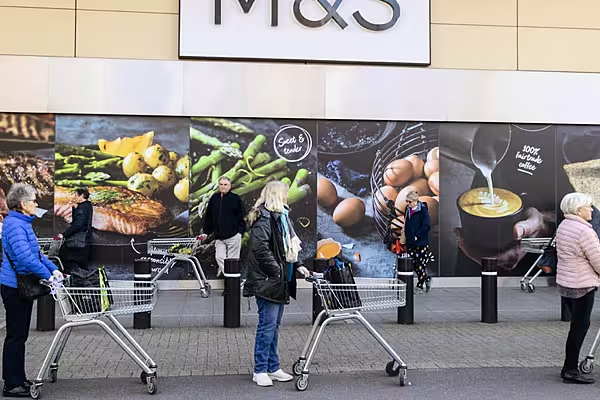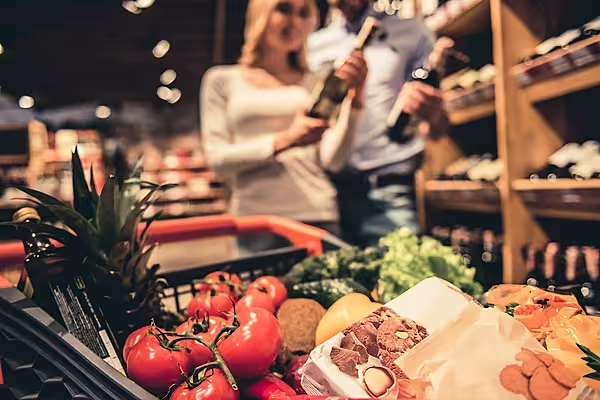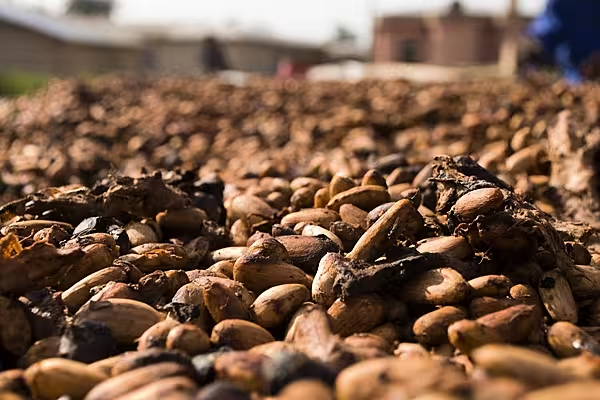With no natural immunity to Covid-19 and no vaccine, the Irish government has focused on increased personal hygiene, restricted freedom of movement, and physical distancing to reduce the speed of spread. These measures, and the consumer behaviours that they have triggered, have led to the emergence of several distinct buying phases in grocery retail stores. Malachy O’Connor reports
Stocking Up
With constant exposure to global media, and certainly when the first coronavirus cases are confirmed in a country, some shoppers start to stock up early.
This isn’t especially visible in terms of empty shelves and there aren’t widespread supply chain issues, but the retailers and their replenishment teams will have noted the blip and reacted by ordering increased quantities of hand sanitisers and non-perishable goods like pasta and canned foods.
This was happening in Ireland from mid-February but kicked in more strongly during the week of 24 February, leading into Saturday, 29 February, when our first case was diagnosed in Ireland.
Panic Buying
This phase kicked in as soon as the government instigated the first steps to restrict freedom of movement and the scale of public gatherings. In Ireland, this started on Thursday, 12 March after the Taoiseach announced the school closures.
Panic buying was heavily challenged by retailers who reassured consumers that there was no shortage of food and other essentials in the supply chain.
In this critical phase, it was logical to point out that much of the food we were eating was harvested last year and is in storage or is produced every day e.g. dairy comes from cows that are milked twice daily.
Retailers did trojan work to re-stock the shelves and build consumer confidence that there is plenty to go around, if shoppers buy the normal amounts.
Empty shelves in Aldi Ireland on 12 March following announcement of school closures
Aldi were quick to tweet reassurances on panic buying and empty shelves
Sustained Increase
This phase comes after governments instigate strict and extensive controls on freedom of movement and business activity, otherwise known as lock-down.
In this phase, restaurants, workplace canteens and cafes are closed.
As a result, out of home consumption missions switch to in-home. In the local Irish market, we have an out of home sector worth about €6 billion per year, where take-home groceries are worth about €12 billion per year.
While nearly all this consumption switches to in-home, not all the spending switches.
In summary, an out of home meal costs roughly 5x the equivalent meal in-home, so we can expect €1.2 billion to switch to the grocery retailers, creating a sustained 10% increase in sales.
Medium Term Trends
After several weeks of stockpiling, panic buying and nervous shoppers, what does the next phase look like? This will depend on three factors:
Out of home transfers: Some products and categories will see sustained changes thanks to other non-food transfers of consumables to in-home missions. Think of all the toilet paper and hand soap that was previously used in a workplace or school setting.
Expandable consumption: Consumers are understandably changing their hygiene routines, using much more anti-bacterial sprays, cleaners, wipes etc. Equally, with the kids at home and everyone restricted to a 2km limit, home-baking and scratch-cooking is growing strongly.
Consumer confidence: Many consumers built up a buffer of non-perishable foods. If confidence remains low, consumers may continue to hold this buffer. If confidence improves, they may begin to consume this stock and we may see negative sales trends in these categories.
In-store impacts
Irish supermarkets remain open for business, but it is a very different world now, with restrictions on the number of shoppers allowed in-store and one in-one out policies. There are also physical distancing measures in place with ‘chevrons’ on the floor to remind customers to keep the required distance from each other and from staff. Plexi-glass till fixtures with staff wearing gloves are commonplace and supermarkets are often providing trolley sanitising and hand-cleaning facilities at the entrance.
COOP Italia introduced plexiglass screens in mid-March and this measure was quickly followed in other countries
Retailer Communications
Some stores have reduced their opening hours to allow hard-pressed staff to replenish shelves.
However, this has the effect of concentrating shoppers within less hours, and if staff and customers do not feel comfortable then it will have a negative impact on morale and ultimately sales. Retailers have tried to address this by agreeing 10% frontline wage bonuses with their staff.
Retailers are also communicating a three-way message of thanks:
1. Firstly, to their staff, since supermarkets are one of the few sectors of retail where the staff are expected to leave the safety of their homes and mingle with the public, putting themselves at risk of infection.
2. Secondly, to their suppliers for helping to keep the shelves stocked and dealing with the massive demand spikes
3. Finally, to their customers, thanking them for their loyalty but also asking them to not stockpile, to respect the distancing rules, and to think of vulnerable sectors of society.
Most stores have now introduced designated times for older customers, carers and healthcare staff to do their shopping.
Tesco are asking their customers to ‘think before they click’ and not to take a highly prized delivery slot when it could be used to serve an over-seventies customer who is cocooning at home.
Retailers are also beginning to show an awareness that they are possibly the only industry doing well from this pandemic.
As a result, they are starting to communicate around their CSR activities and ‘giving back’ to society, as well as their support for frontline healthcare workers.
Lidl were quick to implement priority shopping and robust sanitising procedures at the store entrance.
Channel Differences
Discounters: In the early stages of panic buying, if it looked like some discounter stores were not coping with the demand spike, it was likely because they only stock the highest volume sellers.
As a result, they will have more obvious empty shelves during a panic buying phase. On the other hand, they have highly efficient supply chains and can absorb a sustained 10% uplift quite easily.
The discounters will also have a price advantage for newly unemployed shoppers who are looking to reduce spend.
Based on the Kantar data for the 12 weeks ending 22 March, it appears that Lidl have benefitted more than Aldi.
Their year-on-year market share position was up by 0.5% at 12.3% compared to Aldi, which was up by 0.2% also at 12.3%. This could be attributed to many factors.
Lidl have more stores than Aldi and therefore have a proximity advantage at a time when shoppers are not travelling very far.
Lidl’s new format stores are also bigger on average than Aldi’s, so shopper density is lower in a new age of physical distancing.
Lidl also have partial e-commerce capability via the Buymie app. Let us see how this develops.
Multiples: The bigger stores have many advantages in the current scenario. Tesco, for example, has a space advantage. Consider that their market share peaked at over 28% in 2013.
They now have 21.3% market share, with largely the same store estate as they had back in 2013, so they had significant capacity to increase sales and retain a degree of comfort within physical distancing rules.
Dunnes have larger stores but not as many of them. The lack of proximity and the absence of a grocery delivery service means that, while retaining the number one position, their market share has fallen to 22.3% and their year-on-year growth has declined from 0.5% to 0.0% in the latest 12-week period.
SuperValu are in an interesting position, matching Tesco at 21.3% market share.
They have a definite store numbers advantage and, therefore, proximity, with over 220 stores. They also have an e-commerce capability, which is vitally important right now.
But their market share declined compared to the last 12-week period and their year-on-year position stayed steady at 0.1%. Arguably, they might have gained more during this crisis, but this might still come as the lockdown is extended, shoppers stay local and retailers get used to new volume patterns.
Longer Term Outlook
Private Label Switch: With sudden mass job losses, the medium-term reaction will be much the same as the global recession of 2008. Consumer confidence will fall, and disposable income will reduce.
Even if restrictions are lifted, shoppers will spend less on out of home consumption. In addition, we know from the last recession that they will likely switch to private label to save money.
Before the covid-19 crisis, private label already constituted over 50% of the volume purchases in Irish shopping trolleys.
For any shoppers that had not already joined this trend, the panic buying of mid-March effectively forced a mass sampling exercise.
If the shelves are emptying quickly, many brand loyal shoppers will have tried the private label version for the first time, albeit under duress. Many will have had a surprisingly good experience and brands will need to work hard to win them back.
Sustainability & Food Integrity: It’s not very long ago that the only conversations in the food industry were around veganism and plastics in the oceans.
However, germ-fearing consumers have clearly stated a preference for packaged goods over ‘naked’ un-packaged foods.
It will be important for retailers to continue with their sustainability commitments, but new opportunities will emerge as consumers and retailers will demand additional certification around hygiene standards, sanitising and supply chain integrity.
Online & Home Deliveries: The experience in Italy was that grocery retailers that were active in e-commerce could have tripled their sales in this channel. The only limitation was infrastructure and lack of capacity.
This was mirrored in the local market, where two-week delays in delivery slot availability have been common.
It is likely that many shoppers will have had their first experience of online shopping during this crisis. And many will never go back.
© 2020 Checkout – your source for the latest Irish retail news. Article by Malachy O'Connor. Click sign-up to subscribe to Checkout.









